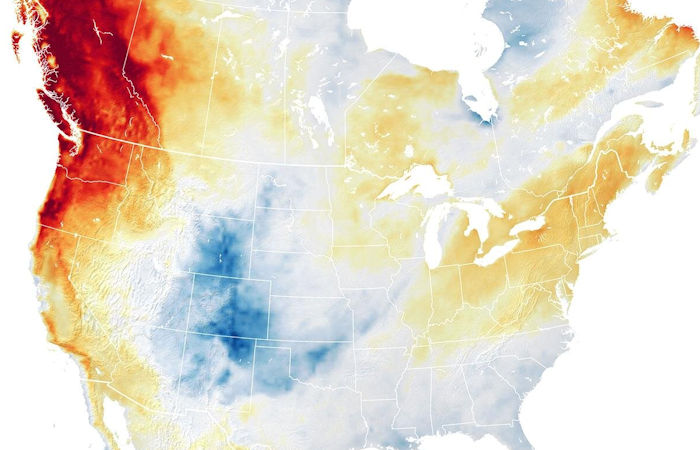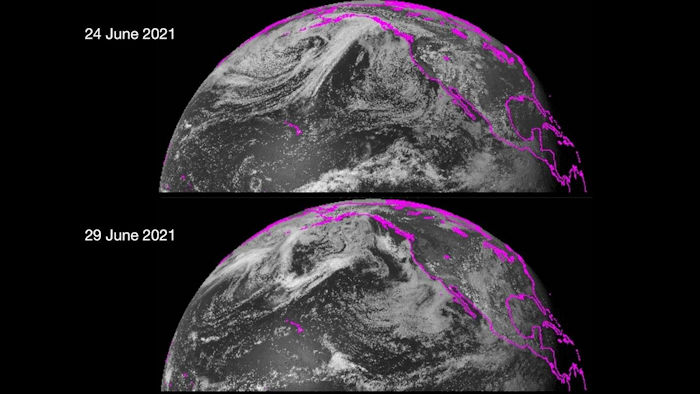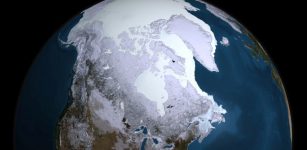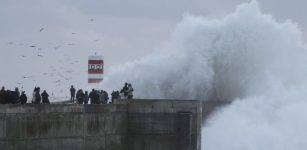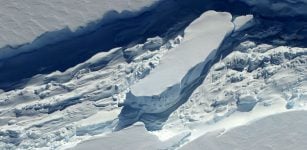New Study Lays Out Hidden Backstory Behind Deadly Pacific Northwest Heat Wave
Eddie Gonzales Jr. – MessageToEagle.com – Last summer, a deadly wave of heat struck the Pacific Northwest, causing temperatures to soar more than 30 degrees Fahrenheit above normal and killing more than a thousand people.
A new study has uncovered the sequence of events that precipitated the disaster, providing information that could further our understanding of heat formation on the North American continent.
Air temperature anomalies across the continental United States and Canada on June 27, 2021, when the heat intensified and records started to fall. Red areas are where air temperatures climbed more than 27°F higher than the average for the same day. Credit: NASA Earth Observatory
By reviewing large-scale weather conditions and formations before the heat wave, University of Chicago scientists discovered that a cyclone spawned an “anticyclone,” which combined to produce and then trap heat near the surface of the region.
The account may shed light on the likelihood of such extreme heat waves in the future. It also serves as a proof of concept for a comprehensive set of diagnostics developed by UChicago Prof. Noboru Nakamura to lay out the mechanisms behind large-scale atmospheric weather. The scientists hope this approach can help lay out why extreme events happen, and to better understand the odds of future events.
Pressure changes
The heat wave began on June 26, 2021.
Previous record high temperatures shattered one after the other, by huge margins. Streetcar cables melted in Portland, Oregon; pavement buckled across the region. Before it was over, a town in Canadian British Columbia tied Death Valley for the highest temperature ever recorded in North America—121 degrees Fahrenheit.
But the conditions had been set in motion weeks before. Using data collected from satellites and on the ground, UChicago scientists set out to re-create the sequence of events.
They found that in the week prior, a cyclone had formed over the Gulf of Alaska. Cyclones are large, spiral-shaped systems that form around a center of low pressure. (Think of the spiral clouds you see during hurricanes.) When clouds form out of water vapor, the process actually releases heat, which accumulated in the atmosphere.
Then, as the cyclone moved slowly away, it triggered the formation of an anticyclone to the east—a system that rotates slowly around a center of high pressure instead of low. These are known as “blocking” systems because they disrupt the normal eastward movement of weather systems. A blocking anticyclone acts like a blanket, trapping heat in a region.
The result was a warm, stagnant column of air that made it difficult for surface heat to escape to the upper atmosphere as it normally does.
Blocking systems are well known for causing heat waves in the mid-latitudes, explained Emily Neal, a UChicago undergraduate student in environmental science and first author on the paper. “But this was an extraordinarily strong blocking event,” said Neal. “Our analysis showed that the warmth of the air column within the blocking system was in the top 0.01% of all events along the same latitude in the past half a century.”
The scientists also hope their research can help fill in gaps in our understanding of how and why heat waves form. They noted that most studies on heat waves have examined events on the European subcontinent, which has its own unique geography and meteorology that may not apply elsewhere.
For example, Neal said, soil moisture is thought to be a major player in European heat waves. “But we don’t think this was at play here,” she said. “Particularly in British Columbia, where much of this is taking place, it’s a very dry environment. So that means we may be looking at a different mechanism than what is in the common literature.”
A better way to project the future
The detective work is also the first real-world test for a framework developed by Prof. Nakamura to lay out the mechanisms behind large-scale atmospheric weather events.
Typically, when scientists run climate simulations, they run their model forward in time for tens and hundreds of years and collect statistics on the frequency and intensity of weather events. Then they change one variable, such as the carbon dioxide level, and rerun the simulation and see how the statistics change. When scientists use this method to predict the average surface temperature and rainfall in the future, most of the models tend to agree. But when they try to predict the frequency of extreme weather events, the models don’t converge.
“If you ask these models to predict the frequency and intensity of future extreme events, such as blocking anticyclones, the answers tend to be all over the map,” Nakamura said.
“This is due to the fundamental nature of atmospheric dynamics affecting statistics in a complex way,” he explained. “Statistics are useful for cataloging and describing the sequence of events, but it’s much harder to be sure about causation when you’re only using that approach.”
Instead, he said, “To really nail causation, you need dynamical theory so that you can understand why it’s happening.”
On 24 June, a heavy band of clouds associated with an extratropical cyclone is seen over the Eastern Pacific and Gulf of Alaska. Heat released in these clouds ended up in the cloud-free region over Western North America on 29 June, where a blocking anticyclone formed and caused the extreme heat. Credit: NOAA GOES17 weather satellite
To that end, Nakamura and his group have spent the past decade working out fluid dynamics and hydrology behind large-scale atmospheric events, and creating a rigorous framework that explains how mid-latitude weather systems work.
This groundwork allowed them to identify the heat released by the upstream cyclone as the main driver of the unusually strong Pacific Northwest heat wave.
Nakamura said the framework can complement the statistical approach: “This tool can help us understand when models do not converge, why, and what things need to be fixed.”
This is especially important as we try to understand how climate change will affect the world. Scientists worry that we are approaching—or have already approached—a tipping point in the alteration of the Earth’s atmosphere, after which extreme events become much more likely. Other scientific studies have estimated that the magnitude of the Pacific Northwest heat wave was “virtually impossible” without climate change.
“There is increased urgency and interest in understanding the prospects for future heat waves,” said Nakamura. “We’re looking forward to begin using this framework to dissect data in a meaningful way, to actually see the important processes and driving forces behind events.
“Since the heating mechanism identified in this work involves condensation of water vapor into clouds, the intensity of atmospheric blocking and heat waves will likely increase in the future as the warming climate allows more water vapor to be present in the atmosphere,” he said.
Written by Eddie Gonzales Jr. – MessageToEagle.com Staff

